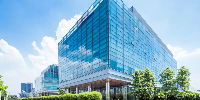Click on select Categories:
STEM CELLS AND RELATED PRODUCTS
CELL BASED ASSAYS AND MOLECULAR BIOLOGY PRODUCTS
Q. What is the difference between primary cells and cell lines?
A. Primary cells are derived directly from tissue and once in culture, primary cells have a finite lifespan. Primary cells are desirable because they retain many of the markers seen in vivo. A cell line is a population of cells that grow and replicate continuously and has undergone a genetic transformation, resulting in indefinite growth potential. Cell lines have been maintained in vitro for medical and/or research purposes. Cell lines can be cultured through a very high number of subcultures and further genotypic/phenotypic changes may occur at very high passage numbers. In general, cell lines lack many of the markers seen in vivo and also show very different marker profiles than primary cells.
Q. How does ScienCell confirm cell type?
A. Cell type is confirmed in multiple ways. Morphology of cells is very important and can help us identify the correct cells. In addition, our Quality Control Department uses immunofluorescence to confirm the presence of identifying markers for the particular cell type. Immunofluorescence can also be used to identify contaminating cells.
Q.What donor information can I obtain about my lot of cells?
A. We keep records for all of our human and animal primary cells. If you have specific requirements (age and/ or sex) please contact our Customer Service Department before ordering.
Q. Do we do Human Leukocyte Antigen typing for our cells?
A. Human leukocyte antigen (HLA) typing is a method to determine how closely the tissues of one person match the tissues of another person. We currently do not test for this at ScienCell Research Laboratories.
Q. Will my vial of primary cells be 100% pure?
A. Primary cells will never be 100% pure, however, we try to get the cells as pure as possible. There are always contaminating cells present.
Q. How much experience do I need for starting to work with normal primary cells?
A. Experience working under sterile conditions with a laminar flow hood is highly recommended, and it is advantageous to have experience working with other cell types. If you are a beginner in cell culture or would like to establish a cell culture lab, we can assist you. Please contact our Cell Culture Specialist.
Q. How should I handle cryopreserved cells upon receiving?
A. Upon receiving the package, immediately transfer the cryopreserved cells from the dry ice shipping container to liquid nitrogen. Transfer quickly from the shipping container to the liquid nitrogen in order to prevent cells from thawing. Do not store the cells at -20°C or -80°C as this causes irreversible damage to the cells.
Q. Do I need to centrifuge the cells to remove DMSO when I first plate cryopreserved cells?
A. We do not recommend centrifuging cells to remove DMSO residue. The centrifugation procedure can be more harmful to cells than the DMSO residue, particularly if inappropriately high speeds are used. DMSO will be sufficiently diluted in medium when you plate the cells. For example, if you plate the whole cryovial (one milliliter) of cells in a T-75 flask with 15 ml of medium, the DMSO concentration will be less than 0.67% (v/v). If you plate cells at 5000 - 10,000 cells/cm2, the concentration of DMSO will be even lower.
Q. How do I establish a culture from cryopreserved cells?
A. Note: Please refer to the cell product sheet for detailed instructions.
Q. How much volume of medium should I add to the cell culture flasks?
A. It is recommend to add 5 ml of medium to a T-25 flask, 15 ml of medium to a T-75 flask, and 30 ml of medium to a T-150 flask.
Q. How often should I change the cell culture medium on my primary cells?
Please see the product sheet for the cell type you are working with for specific instructions. In general, the medium should be changed every 2 - 3 days depending on the confluency of the cells. Note: After thawing and plating the cryopreserved cells, the first medium change should be done after about 16 hours to remove the DMSO residual and dead cells.
Q. At what confluence should I passage my cells?
A. This depends on the cell type. For example, endothelial cells should never become too confluent (90%-100%) as this will promote growth of contaminating cells and cause endothelial cells to be senescent. Fibroblasts, on the other hand, can be subcultured at a higher confluence (90%-98%) and will not be adversely affected by the higher confluency. In general, primary cells should never become too confluent, as this can cause cells to become senescent and promote growth of contaminating cells.
Q. What is the recommended split ratio for normal primary cells?
A. ScienCell Research Laboratories does not recommend a split ratio for normal cells because the number of cells after trypsinization varies. We recommend counting the cells after trypsinization and seeding the cells at the seeding density recommended on the product sheet for the particular cell type.
Q. What is the difference between population doubling and passage number?
A. A population doubling is a two-fold increase in the total number of cells in a culture, and is most commonly referred to during the exponential, or "log", phase of growth. The term passage number refers to the number of times that a cell population has been removed from the culture vessel and undergone a subculture (passage) process, in order to keep the cells at a sufficiently low density to stimulate further growth.
Q. How many passages can I perform with normal primary cells?
A. ScienCell does not use the term "passage" for describing the growth potential because each customer uses a different split ratio. ScienCell Research Laboratories indicates the number of population doublings expected on the cell product sheet.
Q. Can non-proliferating cells be subcultured?
A. Non-proliferating cells cannot be subcultured as they do not proliferate. This includes the following cell types: neurons, microglia, macrophages, and a few others cell types. The product sheet will indicate if cells are non-proliferating.
Q. Can I refreeze ScienCell's normal primary cells?
A. We do not recommend our customers refreeze ScienCell’s human and animal primary cells.
Q. What company do we get our normal wild-type mice and rats from?
A. Charles River Laboratories International.
Q. What strain of rat is used for ScienCell’s rat cells and what is the genetic background?
A. We use CD IGS Rats obtained from Charles River which are an outbred rat strain. CD IGS rats originated in 1925 by Robert Dawley from a hybrid hooded male and a female Wistar rat. IGS refers to animals bred using the Charles River International Genetic Standard system.
Q. What is the difference between CD-1 mice and C57Bl/6 mice?
A. CD-1 IGS mice are outbred mice and are derived from a group of outbred Swiss mice developed at the Anti-Cancer Center in Lausanne, Switzerland. They were imported to the US in 1926 and to Charles River in 1959. C57BL/6 Mice are inbred mice developed by C.C. Little in 1921 at The Bussey Institute for Research in Applied Biology. The C57BL/6 mice are desired because they are used for transgenic/knockout model development (the wild-type mice are a good control).
Q: Can I obtain a sample of media?
A: We do not offer samples of media (except for STEMium® – customer pays for shipping and handling).
Q: Can I use my own medium or other commercially available media for culturing ScienCell's normal human cells?
A: ScienCell's normal human cells have been cultured and tested in our complete growth medium and have adapted to this formula. Using other media for culturing ScienCell's normal human cells may yield unsatisfactory growth results due to the adaptation process. We recommend the use of our special media for culturing the normal human cells.
Q: Do I need additional medium supplements to work with your specialty media?
A: ScienCell specialty media kits come with all necessary components. Depending on the media type, frozen aliquots of growth supplement, Pen/Strep and FBS must be added to the basal media before use.

Q: What is the shelf life for media and growth supplements?
A: Media and supplements should not be used beyond their expiration date printed on the label. Prior to combining, media expires 1 year from the date of manufacture, and supplements expire 2 years from the date of manufacture.
Q: Does ScienCell media work for both human and animal primary cells?
A: Most specialty media has been developed and optimized for human cells and is not guaranteed to work with animal cells. ScienCell does offer some specialty media varieties optimized for animal cells, such as Epithelial Cell Medium-animal (EpiCM-a) and Astrocyte Medium-animal (AM-a). If purchasing animal cells from ScienCell, use the recommended ScienCell media for that cell type.
Q: How soon do I need to use media after preparing it?
A: Once supplements are added to the basal media, it is good for 1 month if stored at 4°C in the dark.
Q: Can I refreeze growth supplements into smaller aliquots for future use?
A: We do not recommend subjecting growth supplements to freeze-thaw, as this can result in reduced activity of components and the potential for components to irreversibly precipitate.
Q: Can I freeze ScienCell's growth media for long-term storage?
A: We do not recommend freezing media, as this can result in irreversible precipitation of media components.
Q: Can I use specialty basal medium without FBS and/or growth supplement with my ScienCell primary cells?
A: We do not recommend omitting FBS and growth supplements from specialty media kits. Specialty media are optimized with these components in order to support the growth of the primary cell they are intended for. Unlike cell lines, primary cells require these complex media components to grow and survive. Cell viability and growth will be severely compromised in the absence of these components.
Q: If I accidentally left my FBS to thaw in a 37°C water bath overnight, is it still okay to use? What might happen to it?
A: FBS left overnight at 37°C should not be used due to the instability of numerous components in the FBS at this temperature.
Q: There are visible flocculants in my FBS – is this normal?
A: The presence of flocculants in FBS is due to lipoprotein precipitates – these are normal and are not harmful to cells. If customers want to remove precipitates from FBS, they can centrifuge briefly at 400g and take the supernatant, though this is not necessary.
Q: Can I obtain multiple lots of media or supplement for comparison and keep those lots on reserve until I choose the lot I prefer?
A: We do not provide samples, but customers may request multiple lots for testing purposes in the case of most products. We may be able to hold a limited amount of inventory for the customer during testing, but please inquire first before placing your order.
Q: Should I keep track of product lot numbers?
A: More information is always better. When possible, we recommend customers keep track of product lot numbers. This can be easily done by peeling product labels and saving to a notebook. While not required, this can help us evaluate problems if they arise.
 上海中乔新舟生物科技有限公司
上海中乔新舟生物科技有限公司